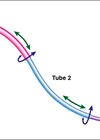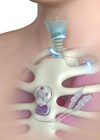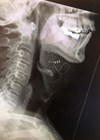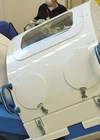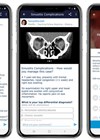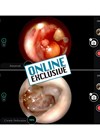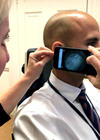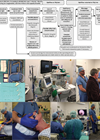Spotlight on Innovation
Robotics in rhinology – fantasy or the future?
Robotic surgery is advancing, but its use in rhinology lags due to spatial constraints and high costs. Innovations in flexible robots may bridge this gap in the future. We are in a new era, one of artificial intelligence and robotics....
The Laryngeal Pacemaker – developing an innovative solution for bilateral vocal fold paralysis
Bilateral vocal fold paralysis is a difficult condition to manage, with surgical interventions previously limited to tracheostomy or arytenoidectomy. Re-innervation surgery has been developed and, in recent years, a Laryngeal Pacemaker is now in clinical trials. We speak to two...
Hyposalivation: a review of current and future treatments
Hyposalivation remains a stubbornly difficult condition to treat, but novel therapies may not be far away. Saliva has many essential functions, including aiding digestion and swallowing, lubrication, maintaining tooth integrity and antibacterial activity. When patients experience reduced saliva production (hyposalivation),...
First UK hypoglossal nerve stimulation implant in the treatment for moderate to severe OSA
Obstructive sleep apnoea has been treated in many different ways over the years. We hear from Yakubu Karagama about one of the latest surgical developments. Introduction Obstructive sleep apnoea (OSA) is by far the most common sleep disorder, affecting all...
Development of a new negative-pressure ventilatory support device: Exovent
The pandemic has driven innovation in ways that we have not seen for many decades. Intensive care medicine and ENT have been at the forefront of these advances, and our good friends David Howard (never one to put his feet...
A medical student’s perspective on the future of obstructive sleep apnoea management
Obstructive sleep apnoea remains an immensely challenging condition to treat. Many treatments have been used over the years, but no single management strategy has proven significantly better than the others. We hear about some technological innovations in the field of...
New ventilation technique FCV: improvement for patient, anaesthetist/intensivist and surgeon
Per-oral surgical access to the larynx can be hampered by the presence of an endotracheal tube. Various systems have been developed for tubeless ventilation, but these all carry a risk of aerosolisation of secretions with obvious inherent risks. We hear...
MedShr for ENT and audiology: clinical case discussion on the go
The COVID-19 pandemic has changed all aspects of our lives – not least medical education. With isolation being the buzzword at the moment, the internet and social media are popular sources for official and crowd-sourced content. In this article, Samantha...
Digital otoscopy with AI diagnostic support: making diagnosis of ear disease more accessible
Following Carolina Leal’s interview with Prof De Wet Swanepoel on the HearScope system, Spotlight on Innovation asked Dr Jenny Nesgaard Pedersen to review the new AI feature in HearScope system’s capabilities. In the last decade, artificial intelligence (AI) and machine...
Portable otoscopy image capture devices – a comparative review
The use of photo documentation in ENT clinics is becoming more common as technological advances have made the hardware required more accessible. There is significant variation in the price of products. Daniel Moualed, Olivia Whiteside and Chris Aldren review the...
What is Transnasal Humidified Rapid-Insufflation Ventilatory Exchange (THRIVE)?
THRIVE is a physiological mechanism for oxygenating and ventilating patients who are under general anaesthesia and who have diminished or absent respiratory effort [1]. Classical ventilation requires bulk flow of gases into and out of the lungs driven by chest...
The use of THRIVE in laryngology and phonosurgery
The team in Lewisham has been using THRIVE for our phonosurgical cases for about a year. Here, we discuss the pros, cons and potential pitfalls of setting up and using THRIVE as ventilation during anaesthesia rather than using an ML...


